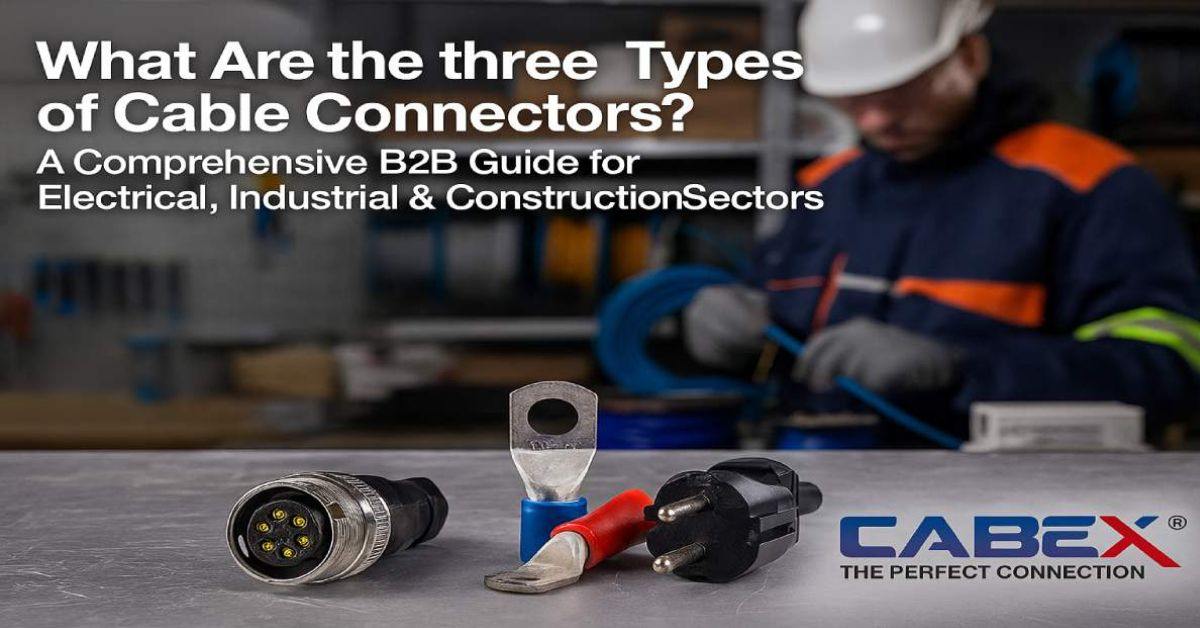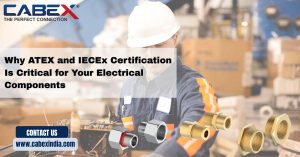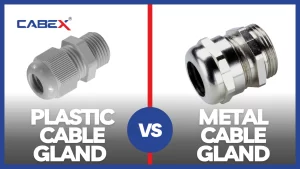Introduction
In the electrical, industrial, and construction sectors—especially across India, the Middle East, and Europe—choosing the right Cable connectors is crucial for ensuring safety, reliability, and compliance with standards like ATEX and IECEx. Procurement officers, electrical engineers, safety managers, and contractors frequently face challenges in selecting connectors that are suitable for their specific cable types, environmental conditions, and certifications. This pillar blog provides a detailed, data-backed guide to the three primary types of cable connectors, supported by expert insights and real user pain points.
The Three Types of Cable Connectors
Industry-standard classifications of Cable connectors generally fall into these three main categories:
- Coaxial Cable Connectors
- Twisted-Pair Cable Connectors
- Fiber-Optic Cable Connectors
Below is a detailed explanation of each type with their key characteristics, applications, and technical considerations.
1. Coaxial Cable Connectors
Coaxial connectors are designed to connect coaxial cables, which have a single copper conductor surrounded by insulation and a shielding layer. They are widely used in broadcasting, telecommunications, and high-frequency signal transmission systems.
- Common Types: BNC, F-type, N-type, SMA
- Key Features: Reliable signal transmission, maintenance of shielding to reduce interference, 50-ohm or 75-ohm impedance matching for different applications
- Applications: TV and radio broadcasting, internet broadband, wireless communication devices, and microwave transmissions
- Environmental Ratings: Often designed to meet IP ratings such as IP68 for dust and water resistance, crucial for industrial and outdoor uses
- Expert Quote:
“Choosing the right coaxial connector is critical for long-term signal stability, particularly in harsh industrial environments where temperature and moisture can degrade standard connectors.” — Rajesh Kumar, Senior Electrical Engineer, Mumbai
2. Twisted-Pair Cable Connectors
Twisted-pair connectors are used with twisted wires, either shielded or unshielded, primarily for network and telecommunication cables.
- Common Types: RJ45 (Ethernet), RJ11 (telephone)
- Key Features: Symmetrical design with pins and locks for secure fit, modular jack format for flexible cable configurations (4 to 8 pins)
- Applications: Local area networks (LANs), telephony, structured cabling systems
- Technical Note: Twisted-pair cables reduce electromagnetic interference due to their wire twisting, enhancing data integrity during transmission
- Expert Quote:
“The modular design of twisted-pair connectors like RJ45 has become the backbone of modern enterprise networking. Their ability to maintain consistent connectivity while supporting high data rates makes them indispensable.” — Dr. Anjali Mehta, Network Consultant, Delhi
3. Fiber-Optic Cable Connectors
Fiber-optic connectors facilitate the transmission of data as light through glass or plastic fibers, offering unparalleled bandwidth and minimal signal loss over long distances.
- Common Types: SC, LC, ST, FC, MT-RJ
- Key Features: Use of polymer ferrules, simplex and duplex designs to support single or dual fiber connections, diverse mounting mechanisms (screw-on, bayonet, snap-in)
- Applications: Data centers, high-speed telecommunications, industrial control systems, environments requiring EMI immunity
- Safety & Compliance: Often paired with certification requirements for hazardous environments, including ATEX and IECEx-approved varieties for explosive atmospheres
- Expert Quote:
“Fiber-optic connectors deliver performance where electrical connectors fail, especially in high-voltage and explosive areas. Choosing certified ATEX and IECEx connectors is non-negotiable in sensitive operations.” — Michael Berg, Industrial Connectivity Specialist, Germany
User Pain Points & Real Questions
From platforms like Reddit and Quora, we have gathered actual industry questions reflecting user challenges:
- “How do I ensure my Cable connectors meet IP68 standards for outdoor use?”
IP68-rated cable connectors are designed for dust-tight and water-resistant protection capable of continuous immersion. Industrial-grade waterproof connectors use robust sealing systems to prevent moisture ingress, essential in construction and marine applications. - “What factors should I consider for selecting the right cable gland for armored cables?”
Selecting cable glands involves cable diameter, armor type, material compatibility, IP rating, thread type, and environmental factors. Brass glands, for example, offer chemical resistance and mechanical durability in harsh sites. - “How can I avoid connector failures caused by harsh industrial conditions?”
Poor connector choice can lead to corrosion, mechanical wear, and signal loss. Using connectors with suitable environmental ratings, proper installation, and maintenance prevents premature failures.
Actionable Advice for B2B Procurement & Engineering Teams
- Assess Cable Type & Application: Match connectors to cable type (coaxial, twisted-pair, fiber-optic) and usage scenario, including data rate, power levels, and environmental exposure.
- Check Certification Compliance: For explosive or hazardous areas, always choose connectors certified under ATEX and IECEx regulations to ensure compliance and safety.
- Consider IP Ratings: For outdoor or wet environments, connectors rated IP68 or higher are recommended to protect against dust and water ingress.
- Material Selection: Brass and stainless steel connectors offer durable corrosion resistance; plastic versions may suit less demanding applications.
- Follow Manufacturer Installation Guidelines: Proper fitting, torque, and sealing prevent damage and extend connector life.
- Plan for Maintenance: Regular inspection and servicing of connectors prevent failures and downtime.
Certification Standards to Know
- ATEX Certification: Ensures connectors meet EU standards for equipment used in explosive atmospheres. Relevant in the petrochemical, oil & gas, and mining sectors.
- IECEx Certification: International certification verifying equipment safety in hazardous locations.
- IP Rating (Ingress Protection): Defines protection level against solids and liquids, IP68 indicates dust-tight and capable of continuous immersion.
Conclusion
Choosing the right cable connector type—coaxial, twisted-pair, or fiber-optic—is fundamental for maintaining operational reliability, safety, and compliance in electrical, industrial, and construction projects. Paying close attention to certification standards, environmental ratings, and application-specific needs prevents costly failures and ensures seamless connectivity. Procurement officers and engineers must stay informed about technical specifications, user challenges, and best practices to make confident, compliant decisions that deliver lasting performance.
For more specialized solutions, including brass cable glands, earthing accessories, and certified industrial connectors, visit Cabex India — your trusted partner in high-quality electrical components tailored for global industrial standards.
FAQ
Q: What are the main differences between coaxial, twisted-pair, and fiber-optic connectors?
A: Coaxial connectors preserve shielding for high-frequency signals. Twisted-pair connectors use paired wires for reduced interference in networking. Fiber-optic connectors transmit data as light, enabling high speed and long-distance transmission.
Q: How to choose the right cable gland for industrial use?
A: Consider cable diameter, material, IP rating, thread type, temperature range, and whether the gland must be explosion-proof or suitable for armored cables.
Q: Why is an IP68 rating important for cable connectors?
A: It certifies that connectors can withstand dust and water ingress, even under long-term submersion, critical in harsh industrial and outdoor environments.
Q: What certifications do I need for connectors used in explosive atmospheres?
A: Choose connectors certified under ATEX for European markets and IECEx for international compliance; these ensure safety in hazardous zones.
Q: How can I extend the life of cable connectors?
A: Use proper connectors for your environment, ensure correct installation, avoid mechanical strain, and schedule routine inspections and maintenance.
You May Also Like: Top Questions Cable Accessories , Buy Explosion Proof Cable Glands Online





